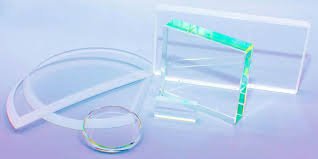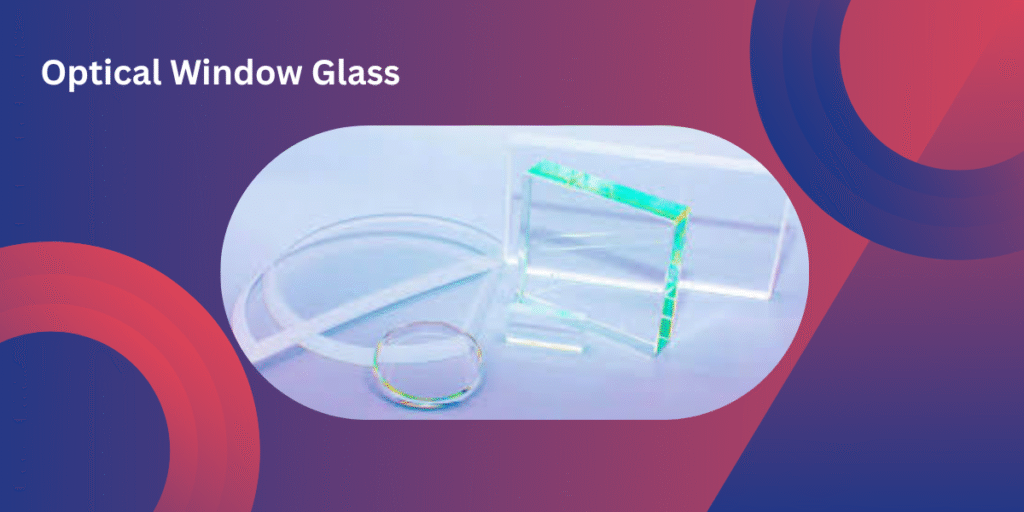When we hear the word optical window or glass panel, many people think about home windows. But in the optical industry, window materials have a very different and important role. Optical-grade glass is a flat, transparent glass sheet used in scientific instruments, lasers, cameras, telescopes, and other high-tech devices. Its job is to let light pass through without changing or distorting the image.
In this complete guide, we will cover the types of window glass, their benefits, how they are used in optics, and what factors you should consider before buying them.
What is Optical Window Glass?
Optical window glass is a transparent, flat glass plate designed to protect optical systems while allowing light to pass without distortion. It acts as a barrier between the environment and sensitive optical components such as sensors, detectors, and lenses.
Unlike normal glass, optical glass windows are made with high-quality materials that ensure minimal absorption, scattering, or reflection of light.
LSI & Semantic Keywords used here: optical glass, optical windows, light transmission, laser optics, scientific instruments
Types of Window Glass in the Optical Industry
There are many types of optical window glass, each with different functions. Here are the most common types:
1. BK7 Glass
- One of the most widely used optical glasses.
- High transmission in the visible spectrum.
- Affordable and suitable for general laboratory use.
2. Fused Silica Glass
- Excellent UV and infrared transmission.
- Very low thermal expansion, making it stable in high temperatures.
- Commonly used in laser and spectroscopic applications.
3. Sapphire Glass
- Extremely strong and scratch-resistant.
- Transparent across a wide wavelength range (UV to IR).
- Used in harsh environments where durability is required.
4. Quartz Glass
- Good for ultraviolet (UV) transmission.
- Resistant to high heat and chemicals.
- Often used in photonics and semiconductor industries.
5. Coated Glass
- Has anti-reflective or protective coatings.
- Improves light transmission and reduces reflection.
- Popular in imaging systems, cameras, and telescopes.
Benefits of Using Optical Window Glass

Optical window glass offers several advantages that make it essential for high-precision devices:
- High Light Transmission – Maintains accurate image quality and reduces signal loss.
- Environmental Protection – Shields sensitive components from dust, moisture, or chemicals.
- Durability – Materials like sapphire and quartz withstand high pressure and temperature.
- Customizable – Can be coated with anti-reflective or protective layers for better performance.
- Wavelength Control – Different glasses are optimized for UV, visible, or IR applications.
Applications of Optical Window Glass
Window glass is widely used across different optical systems:
- Laser Optics – Protects lenses and mirrors from laser damage.
- Cameras & Imaging – Improves picture quality by controlling reflections.
- Microscopes & Telescopes – Ensures clear light transmission for accurate imaging.
- Medical Devices – Used in diagnostic equipment like endoscopes and scanning machines.
- Semiconductor Industry – Protects delicate sensors during chip manufacturing.
Semantic Keywords used here: precision optics, optical coatings, transparent glass, photonics, imaging systems
How to Choose the Right Window Glass
When selecting optical window glass, you must consider:
- Wavelength Range – Ensure the glass is optimized for UV, visible, or infrared light.
- Material Strength – Sapphire is best for durability, while BK7 is cost-effective.
- Environmental Conditions – High-heat or chemical environments need quartz or fused silica.
- Coating Options – Anti-reflective coatings are useful for reducing glare and reflection.
- Budget & Application – Choose according to your project’s requirements.
Maintenance & Care Tips
To extend the life of your optical window glass:
- Always handle with clean gloves to avoid fingerprints.
- Store in a dust-free container when not in use.
- Clean with proper optical cleaning solutions, not household cleaners.
- Avoid scratching the surface during handling or cleaning.
Future Trends in Optical Window Glass
The optical industry is constantly evolving, and so is window glass technology. Some key trends include:
- Smart Optical Windows with switchable transparency for advanced imaging.
- Eco-friendly Materials that reduce environmental impact.
- Nanocoatings for better performance against dust, water, and reflection.
- AI-powered Optical Systems that demand more precise glass components.
Conclusion
Optical glass in the optical industry is far more than a transparent plate. It is a critical component that ensures accuracy, durability, and protection in high-performance devices like optical windows, BK7 glass, and imaging lenses.
By understanding the types, benefits, and uses of optical window glass, you can make the right choice for your application. Whether you need BK7 for general use, fused silica for high temperatures, or sapphire for durability, there is always a perfect option for your optical needs.

